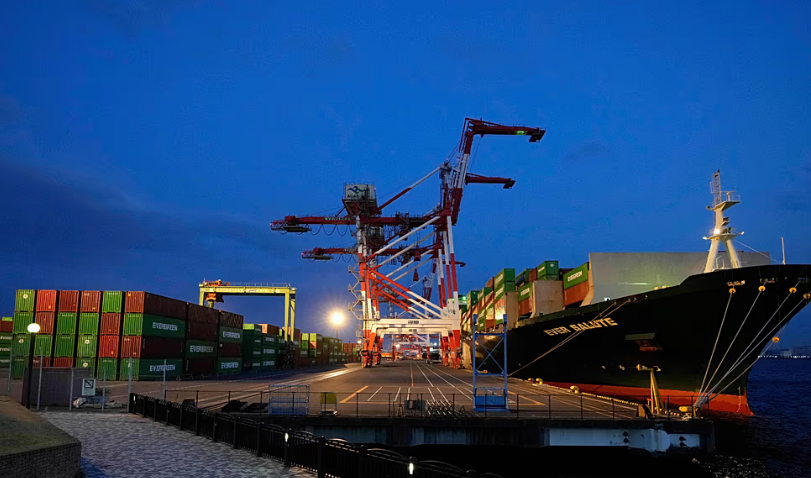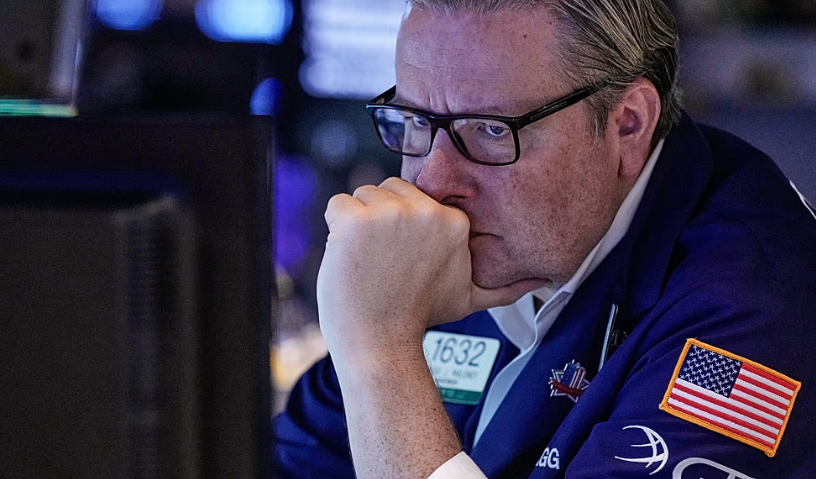Business
Survey Reveals High Stress Levels and Job Dissatisfaction Among European Workers
A recent survey by ManpowerGroup highlights widespread workplace stress and job dissatisfaction across Europe, with nearly half of workers experiencing daily stress and a third considering changing jobs within the next six months. The findings, part of the Global Talent Barometer, offer insights into well-being, job satisfaction, and workforce confidence across 16 countries, including 10 in Europe.
Stress Levels Vary Across Europe
The survey revealed that 48% of European workers report daily work-related stress, with notable variations by country. Spain leads with the highest stress levels at 58%, followed by Sweden and Italy at 53%, and Poland at 51%. The Netherlands recorded the lowest stress levels at 34%, with Norway and Switzerland also below average at 40% and 46%, respectively.
Despite high stress levels, 65% of European workers feel supported in maintaining work-life balance and personal well-being. The Netherlands reported the highest perceived support at 73%, while France, Germany, and Switzerland fell below average.
Job Satisfaction and Career Development
Although 82% of respondents find their work meaningful, a significant portion of workers is dissatisfied with career development opportunities. One-third of respondents believe their organisations lack sufficient avenues for advancement, with Norway (41%) and Switzerland (39%) reporting the highest dissatisfaction.
Becky Frankiewicz, ManpowerGroup’s Chief Commercial Officer, noted the evolving expectations of workers. “People expect work to offer more than just a paycheck—more balance, more humanity, and more options. Organisations must meet these needs to retain talent,” she said.
Job Security and Confidence
While 71% of workers feel confident about job security over the next six months, 25% express concerns about involuntary job loss. Norway reports the lowest fear of job loss (18%), while Spain and Poland have the highest (29%).
Confidence in finding a new job within six months stands at 58% across Europe, with the Netherlands (66%) and the UK (65%) leading. Italy (48%) and Sweden (49%) reported the lowest confidence levels.
Training and Retention Efforts
The survey also highlights the role of training in boosting job satisfaction. In the Netherlands, where job satisfaction is highest, 42% of workers received training in the past six months. This contrasts with Norway, where only 37% reported similar opportunities.
Conclusion
ManpowerGroup’s findings underline the challenges European employers face in addressing worker stress, career development, and job satisfaction. As employees increasingly seek workplaces that prioritise balance, growth, and well-being, organisations must adapt to meet these expectations or risk losing talent in an increasingly competitive market.
Business
Japan’s Economy Contracts as U.S. Tariffs Hit Exports, Posing Early Test for New Prime Minister

Japan’s economy recorded a sharp slowdown in the July–September quarter, contracting for the first time in a year and a half as U.S. trade tariffs weighed heavily on exports. Government figures released on Monday showed an annualised decline of 1.8%, driven largely by weakened overseas demand after Washington imposed new duties on Japanese goods.
While the downturn was significant, it was not as steep as the 2.6% drop projected by economists. On a quarter-to-quarter basis, gross domestic product slipped 0.4%, ending six straight quarters of expansion and signalling a tougher economic landscape for recently appointed Prime Minister Sanae Takaichi.
Exports recorded one of the sharpest declines of the quarter, falling 1.2% from the previous period. The government noted that some firms rushed shipments earlier in the year to get ahead of tariff deadlines, which boosted earlier export data but resulted in weaker numbers for the autumn quarter. On an annualised basis, exports tumbled 4.5%.
Imports were slightly lower as well, dipping 0.1%, while private consumption — a key driver of the domestic economy — inched up by the same margin. Economists say the modest rise in household spending is not enough to offset the strain placed on the country’s major industries.
The tariff pressures stem from measures introduced by U.S. President Donald Trump, who has implemented a 15% duty on nearly all Japanese imports. Although this marks a reduction from the previous 25% rate, the impact has been severe for Japan’s export-heavy economy. Automakers such as Toyota Motor Corp. have long been central to Japan’s global trade profile, though many have built factories abroad to reduce exposure to such trade barriers.
The latest GDP results add to the mounting challenges facing Takaichi, who assumed office in October. Alongside the economic risks, her government is navigating rising diplomatic tensions with China. Earlier this month, the prime minister stated that Japan may consider military action if Beijing launches an attack on Taiwan, prompting sharp reactions from Chinese officials.
Talks between diplomats from both countries are scheduled to take place on Tuesday, with economic stability and regional security expected to dominate the agenda.
The combination of trade pressures, geopolitical strain and a fragile domestic recovery places Japan at a sensitive moment, with policymakers now under heightened pressure to stabilise growth in the months ahead.
Business
Global Stocks Fall as Tech Valuations and Fed Rate Uncertainty Weigh on Markets

Global equities declined on Friday as investors grew cautious over high valuations in technology and AI sectors, coupled with uncertainty about whether the US Federal Reserve will deliver further interest-rate cuts. European markets opened sharply lower following losses in Asian shares and a drop on Wall Street on Thursday.
“Markets are down across the board as investors fret about cracks in the narrative that’s driven the mother of all tech rallies over the past few years,” said Dan Coatsworth, head of markets at AJ Bell. He highlighted concerns over elevated equity prices and heavy spending on AI amid signs of a fragile labor market.
In Europe, UK government bond yields surged after reports that Chancellor Rachel Reeves had abandoned plans to raise income taxes in this month’s Autumn Budget, raising questions about a potential fiscal shortfall. The ten-year gilt yield climbed above 4.54% before easing slightly. Bank shares were among the worst performers on the FTSE 100, which fell more than 1.1% by 11:00 CET. Other European indices also declined, with the Stoxx 600 down nearly 1%, Germany’s DAX off 0.7%, France’s CAC 40 down 0.7%, Madrid’s benchmark losing 1.2% and Milan’s index down 1%.
Some companies bucked the overall trend. Luxury group Richemont rose 7.5% after exceeding first-half profit expectations, and Siemens Energy gained more than 10% after raising its 2028 financial targets. In contrast, Ubisoft delayed its six-month financial report, triggering a suspension in trading after an earlier drop of over 8%.
Wall Street had suffered a sharp decline on Thursday, with the S&P 500 and the Dow Jones Industrial Average both down 1.7%, and the Nasdaq falling 2.3%. Technology and AI-linked stocks experienced heavy selling, with Nvidia down 3.6%, Super Micro Computer off 7.4%, Palantir down 6.5%, Broadcom losing 4.3%, and Oracle sliding more than 4%. The sector’s rapid gains this year have drawn comparisons with the dot-com boom, prompting questions about the sustainability of current valuations.
Asian markets also reflected the cautious mood. China reported factory output growth at 4.9% year-on-year in October, the slowest in 14 months and below expectations. Weakness in fixed-asset investment, especially in the property sector, added to concerns. South Korea’s Kospi fell 3.8%, with Samsung Electronics down 5.5% and SK Hynix off 8.5%. Taiwan’s Taiex dropped 1.8%, Japan’s Nikkei 225 lost nearly 1.8%, and Hong Kong’s Hang Seng slipped 2%. The Shanghai Composite declined 1%.
Oil prices rose, with Brent crude up 1.6% at $63.99 per barrel and West Texas Intermediate climbing 1.8% to $59.76. The dollar strengthened slightly against the yen at ¥154.55, while the euro traded at $1.1637.
Investors continue to weigh the risks of stretched valuations in technology against uncertain monetary policy, leaving markets cautious as they head into the final months of 2025.
Business
Eurozone Economy Shows Weak Growth as Business Activity Faces Mixed Signals

The eurozone’s economy expanded only slightly in the third quarter of 2025, with GDP rising 0.2% compared with the previous quarter, while the broader European Union recorded a marginal 0.3% gain, according to a flash estimate from Eurostat. Year-on-year, growth stood at 1.3% in the eurozone and 1.5% across the EU, reflecting continued but fragile expansion.
Sweden posted the strongest quarterly increase at 1.1%, followed by Portugal at 0.8% and Czechia at 0.7%. In contrast, Lithuania’s economy contracted by 0.2%, while Ireland and Finland each recorded a 0.1% decline. Analysts said the data shows that economic momentum is uneven across member states, with some countries gaining ground while others struggle to maintain growth.
The labour market remained broadly stable. The eurozone unemployment rate held at 6.3% in September, unchanged from both August 2025 and the same month last year. Including non-eurozone EU members, the jobless rate stood at 6.0%, slightly higher than 5.9% a year earlier. Overall, approximately 13.25 million people were unemployed in the EU, including around 11 million within the eurozone. Youth unemployment remained elevated at 14.8% in the EU and 14.4% in the eurozone. Women’s unemployment was slightly higher than men’s at 6.5% versus 6.2%.
Eurostat also reported mixed signals in business activity. New company registrations across the EU rose 4.0% in the third quarter. The strongest growth came in tech, information and communications (+6.0%), construction (+5.9%) and transport (+5.5%). At the same time, bankruptcies climbed 4.4% quarter-on-quarter, with the sharpest increases in accommodation and food services (+20.7%), transport (+18.7%) and financial services (+14.1%). In contrast, bankruptcies declined in the information and communications sector (-4.8%), construction (-3.1%) and general industrial businesses (-0.1%).
The contrasting trends in new business registrations and insolvencies suggest that while entrepreneurship remains active, certain consumer-facing and logistics sectors continue to face financial pressures. Analysts said the sharp rise in bankruptcies in accommodation, food services and transport may reflect higher operating costs and tighter financing conditions, even as other industries expand.
Overall, the data paints a picture of a European economy advancing cautiously. Growth remains modest, unemployment is largely stable, and the business environment shows both opportunities and risks. Policymakers are likely to monitor these developments closely as they assess measures to support economic resilience and sectoral stability across the eurozone.
-

 Entertainment1 year ago
Entertainment1 year agoMeta Acquires Tilda Swinton VR Doc ‘Impulse: Playing With Reality’
-

 Business1 year ago
Business1 year agoSaudi Arabia’s Model for Sustainable Aviation Practices
-

 Business1 year ago
Business1 year agoRecent Developments in Small Business Taxes
-

 Home Improvement12 months ago
Home Improvement12 months agoEffective Drain Cleaning: A Key to a Healthy Plumbing System
-

 Politics1 year ago
Politics1 year agoWho was Ebrahim Raisi and his status in Iranian Politics?
-

 Business1 year ago
Business1 year agoCarrectly: Revolutionizing Car Care in Chicago
-

 Business1 year ago
Business1 year agoSaudi Arabia: Foreign Direct Investment Rises by 5.6% in Q1
-

 Sports1 year ago
Sports1 year agoKeely Hodgkinson Wins Britain’s First Athletics Gold at Paris Olympics in 800m



























